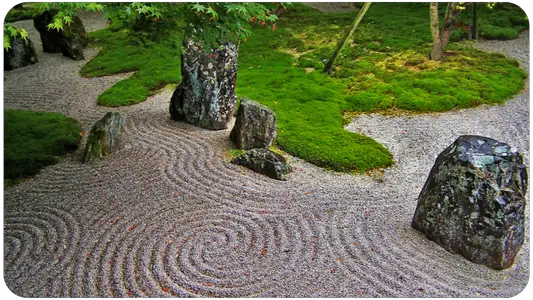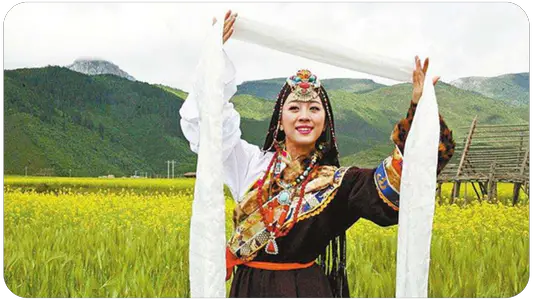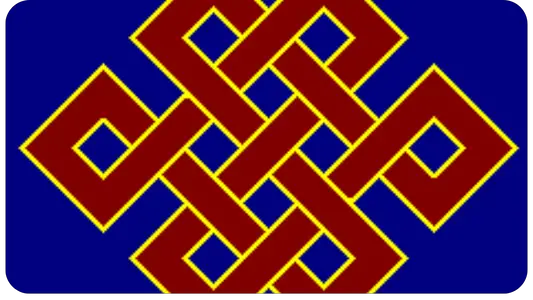Mañjuśrī (or Manjushri, Sanskrit: मञ्जुश्री, Mañjuśrī) generally known in China as Wenshu Pusa (Wénshū Púsà 文殊菩薩), in Japan as Monju, 文殊菩薩 (Monju bosatsu), Jampelyang / Jampa in Tibetan : འཇམ་དཔལ་དབྱངས།, Wylie: 'jam dpal dbyangs, Văn-thù-sư-lợi in Vietnamese, is a great bodhisattva (Bodhisattva Mahasattva), personification of wisdom (Prajñāpāramitā), important in Mahāyāna and Vajrayāna Buddhism. His name means: Graceful Glory.
Various names and roles
His Sanskrit name, a combination of mañju- (gracious, gentle) and -śrī (honorable, holy, glorious), is sometimes translated into Chinese (e.g., "Miàoshǒu"): Miàoshǒu 妙首, Miàodé 妙德, Miàojíxiáng 妙吉祥), but he is more often referred to as the Wénshū Púsà (Bodhisattva Wenshu), a reduced form of Wénshūshīlì 文殊師利, a transcription of Mañjuśrī. Its other Chinese names corresponding to its different aspects: Rǔtóng wénshū 孺童文殊, Wenshu the young child, symbolizes the annihilation of the self, Fǎwángzǐ 法王子, Son of the Buddha, reminds us that he is sometimes described as his successor in the Buddha-free world, Fómǔ 佛母, Mother of the Buddhas refers to her prominent role played in her previous lives of being the preceptor of the bodhisattvas who became Buddhas.
Other Sanskrit epithets: Mañjuśrī Kumārabhūta (the Juvenile), Vagishvara (Lord of the Word), Mañjuśvara, Mañjupāla (Sweet Protector), Mañjugosha (Melodious Voice).
In Tibetan, the name Jampal ('jam dpal) renders "Sweet Glory" or "Sweet and Glorious", another possible translation from Sanskrit. Jampeyang ('jam dpal dbyangs), often contracted to Jamyang, corresponds to Mañjugosha (Melodious Voice). Jamgõn ('jam mgon) translates to Mañjupāla (Gentle Protector).
He is sometimes depicted as an ordinary bodhisattva, a former Brahmin companion of the Buddha, but other sutras depict him as the teacher of the dharma to all bodhisattvas, or even as a Buddha in his third avatar.
His different aspects are inspired by his image in the sutras, where philosophical and metaphysical subtleties are often presented through debates between bodhisattvas. In these debates Wenshu always wins: he represents one of the elements necessary to attain enlightenment, intelligence (dàzhì 大智); the other three main bodhisattvas represent compassion (dàbēi 大悲) (Avalokiteśvara), practice (dàxíng 大行) (Samantabhadra), vow (dàyuàn 大願) (Kshitigarbha). His importance sometimes grows to the point of making him the master of others, he then represents spiritual realization at the highest level.
In Tibetan representations of the philosophical schools of Mahāyāna Buddhism, Mañjuśrī is the head of the Madhyamaka lineage, Maitreya being the patron of the Cittamātra lineage.
As Kşitigarbha, he is sometimes considered to have been appointed by the Buddha as a helper of souls during the Buddha-less age, an era of disorder before the advent of Maitreya. Like Avalokiteshvara or Amitābha, he can be considered a savior. A Buddhist text, in connection with the pilgrimage to Mount Wutai where Mañjuśrī is said to appear, states that the devotee who has seen or heard him will be safe from vicissitudes for ten kalpas. The Lotus Sūtra and the Avatamsaka Sutra attribute to him a paradise located in the East, admittedly much less well known than that of Amitābha. Like Avalokiteśvara, he is protean; he often appears in the form of a mendicant to give devotees the opportunity to do a good work.
He may form a triad with the Buddha and Samantabhadra (he is on the left and Samantabhadra on the right), or Avalokiteśvara and Vajrapani in Tibetan Buddhism. In the latter school, he has a consort, Sarasvatī. He manifests in lamas of the Gelugpa lineage.
Wenshu Pusa and Mount Wutai
His cult in China developed particularly from the Northern and Southern Dynasties (420 - 589) on Mount Wutai (五台山 / 五臺山, wǔtáishān, "Mountain of Five Terraces"), the first of the four Buddhist mountains, identified with the "Mount of Coolness" which is his domain in the Avatamsaka Sutra. At first, he was mainly linked to the Huayan school. Carried away by religious enthusiasm, a prince of the Northern Qi is said to have immolated himself to the bodhisattva. His favor grew even more during the reigns of Wu Zetian, who supported Buddhism for partly political reasons, but especially of Daizong of the Tang. This emperor indeed favored Tantric Buddhism, which emphasizes the savior aspect of the bodhisattva, particularly appreciated in the troubled times of his reign. Wénshū Púsà was erected as the savior of the country; Daizong ordered his effigy to be placed in all monasteries. Mount Wutai became the location of the first Chinese tantric schools.
A popular belief has Mañjuśrī and Samantabhadra, another of the four great bodhisattvas, master of Mount Emei (峨眉山, é méishān), incarnated in two orphans raised in a monastery, who are said to have become the famous monks and friends Hanshan (寒山, hánshān) and Shide (拾得, shídé).
Mañjuśrī and Mount Wutai play a role in the legend of the early Qing Dynasty, which often favored Tantric Buddhism. Indeed, it is claimed that the founder, Nurhachi, a Jurchen, imposed the Manchu name on his clan because he considered himself the reincarnation of Mañjuśrī. His grandson who completed the conquest of China, Shunzhi, had been interested in Buddhism since his teens and is said to have faked his death to become a monk on Mount Wutai. These beliefs have been disproved by historians, but many texts and anecdotes from the dynasty allude to them.
Mañjuśrī in Tibet
Several prominent masters of Tibetan Buddhism are considered emanations of the Bodhisattva Mañjuśrī :
thus in the Nyingma lineage, King Trisong Détsen, the masters Longchen Rabjam and Mip'am Rinpoche, and in general the Khyentse Lamas.
Among the Sakyas, the great masters Sakya Pandita and Jamyang Khyentse Wangpo, and in general the Sakya throne holders, including Ngawang Kunga Tegchen Palbar, the present Sakya Trizin, the 41st master of this lineage dating back to the tenth century.
Among the Kagyus, Jamgön Kongtrul Lodrö Thayé
Among the Gelug, the founder Je Tsongkhapa whose coming to Tibet was prophesied by Siddhartha Gautama (Shakyamuni Buddha).
Mount Wutai in Shanxi province near Beijing is a sacred place of Buddhism about Mañjuśrī, also considered sacred by Tibetan Buddhists who go there on pilgrimage. Various temples and monasteries of Tibetan Buddhism have stood alongside those of Han Buddhism for centuries. One can cross there the monks of a confession in the temples of those of the other confession. Pilgrims, Hans, Tibetans or other Chinese minorities also mingle there.
Like most Gelug, Tenzin Gyatso, the 14th Dalai Lama has a special devotion to this Bodhisattva. He gave a teaching entitled "The Spirit of Mañjuśrī" in New York in May 1998. On April 21, 2007, he stated that "The Five Terraces Mountain, or Mount Wutai, in China is renowned for its association with Mañjuśrī, the Bodhisattva of Wisdom. My predecessor, the 13th Dalai Lama (Thubten Gyatso), was able to make a pilgrimage there, and since my first trip to China in 1954, I have cherished the hope that I could follow in his footsteps. Recently, the Chinese authorities refused my request, saying that the roads were impassable. I am sure that the road is clear today. During the current discussions we had with the Chinese authorities about Tibetan autonomy, my emissaries reiterated my wish for this visit. There are many sacred places in China, a country where Buddhism has long been developed. I would like to visit some of these places. And at the same time, while I am there, I hope to see for myself the changes and developments that have taken place in the People's Republic of China. "
Iconography
Mañjuśrī is usually depicted with a sword (khadga) of fire symbolizing intelligence in his right hand, and in his left a book representing transcendent wisdom (prajnaparamita), which his folded arm places at heart level. He wears the headdress composed of five elements representing the five Buddhas of wisdom.
Tutelary deity
In popular Buddhism and traditional Chinese religion, Wenshu Pusa is, along with Wenchangdijun and Confucius, one of the tutelary deities to whom one turns for success in studies.
In Nepal, where Mañjushri is considered the patron saint, legend attributes to him the birth of the Kathmandu valley, which was once submerged under a lake from which only the sacred hill of Svayambhu emerged. With a stroke of his sword, Manjusri is said to have opened the passage to the Baghmati River, drying up the valley and allowing access to the sanctuary.
Mantras of Mañjuśrī
The best known Mañjuśrī Mantra is OṂ ARAPACANA DHĪH, pronounced by the Tibetans "OM A RA PA TSA NA DHIH" and by the Japanese "ON ARAHASHA NOU". Also: Om Vāgiśvari Mum. The seed syllables Dhih and Mum are associated with Mañjuśrī.
To have a good memory or to develop one's intelligence one often addresses the Bodhisattva of great wisdom, and the recitation of the following mantra is widely practiced in China: Namah samanta buddhānām. He he Kumāraka vimukti pathasthita smara smara pratijñā svāhā. There is also "OM HRIH DHIH MA ME DI PAM MAÑJUSHRI MUM HRIH PRAJÑA VARDHA NI HRIH DHIH SVA HA" which, when pronounced in Tibetan, gives "OM HRI DHI MA ME DI PAM MENJUSHRI MUM HRI TRAJNA WARDHA NI HRI DHI SOHA"
Diagnosed with Lyme disease in 1991, Jeffrey Hopkins confided to Robina Courtin in 1993 the recuperative help he received from the recitation of the Manjushri mantra given to him several years earlier by Ling Rinpoche.





